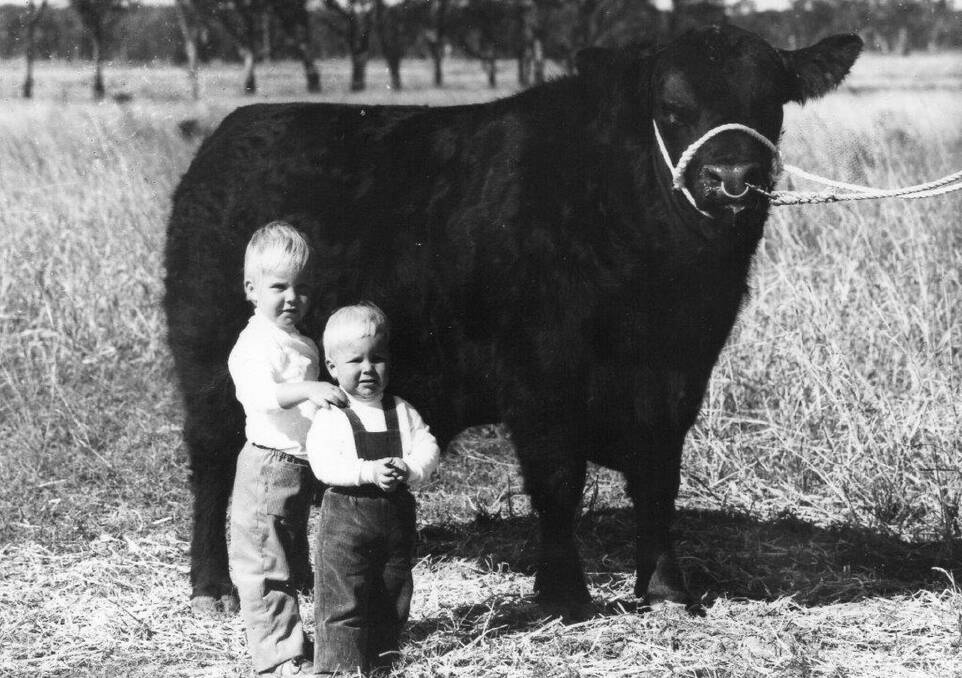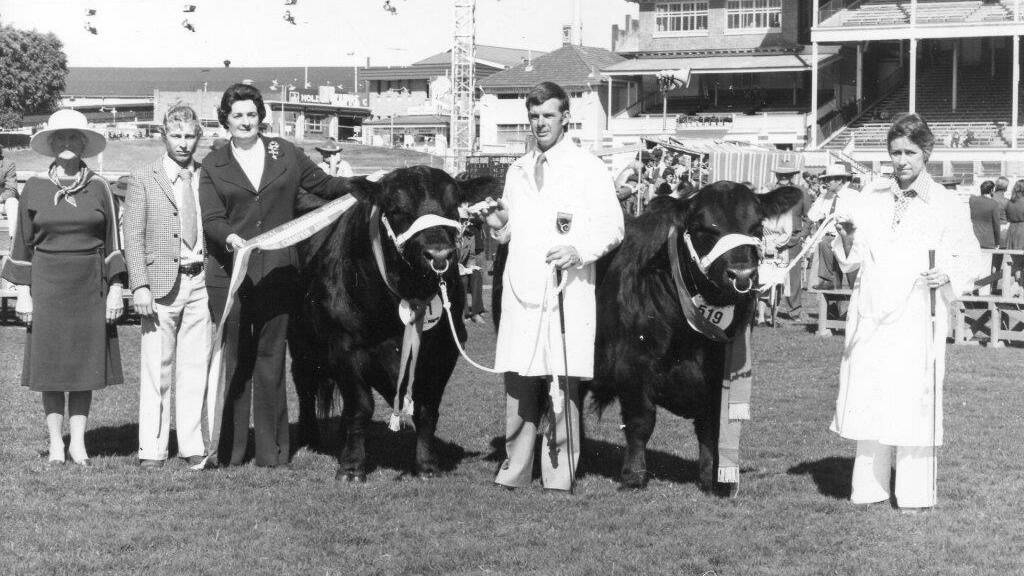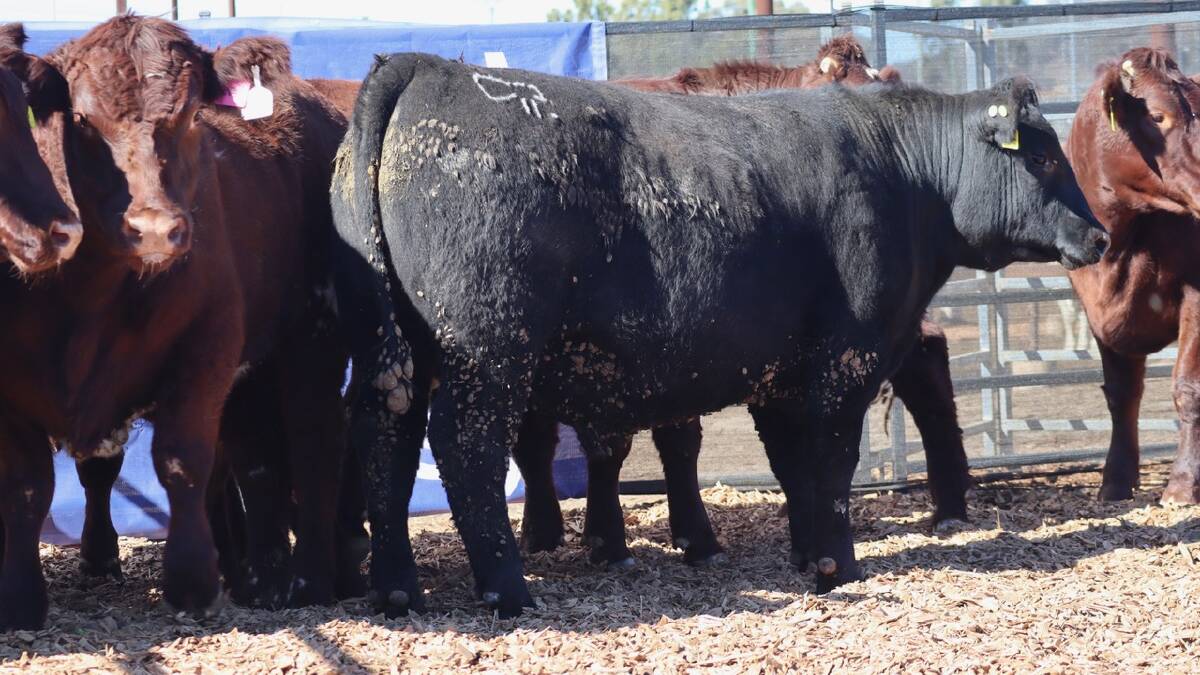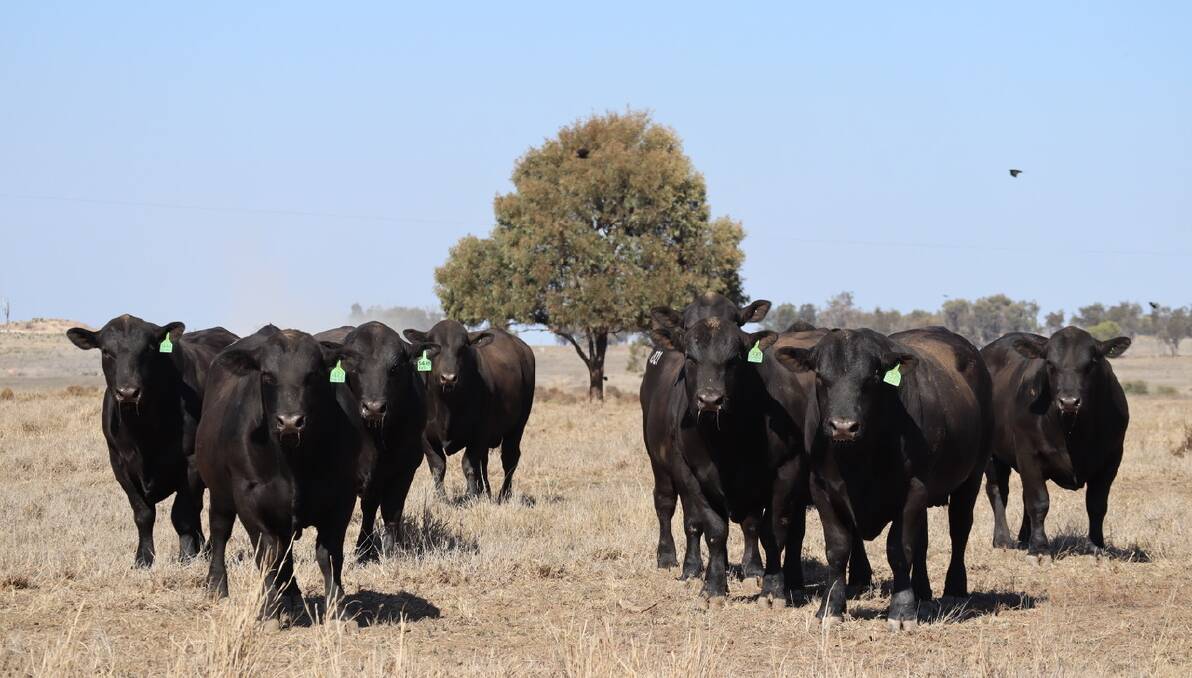Raff Angus success in RNA Paddock to Palate debut is yet another milestone

This is branded content for Raff Angus
Seen as one of the boldest moves in the beef industry of the time, in 2015 the Raff family relocated their established Angus operation thousands of miles south, however that is not the start of their story, nor the end.
With origins on the Southern Downs in Queensland, Raff Angus is today thriving on the fertile pastures of King Island, Tasmania, and in 2025 will be calving down 750 Herd Book-registered cows.
Last month, on debut, they tasted success in stage one of the prestigious RNA Paddock to Palate competition, winning Champion Individual Weight Gain Steer in the 100 Day HGP Free Export Class, with their milk tooth steer gaining 2.79 kilograms per day and at just 16 and a half months, weighing 723kg.
They also took out second place within the Pen of Six Weight Gain Class. This pen averaged 2.47kg per day and had a group average live weight of 662kg at just 16 and a half months, competing against 28 pen groups within their class.
It was noted that Raff's win was quite extraordinary given they had to transport their cattle thousands of kilometres to compete against producers with a long track record in the competition.
The third generation of the Raff family, Harry, Charlie, Georgina, and Olivia, are set to continue the legacy of their grandfather, David, and parents Andrew and Anna.
From humble beginnings, stud founder David Raff, then 21, purchased his first farm in 1967 - a 400-hectare former dairy farm between Leyburn and Karara, west of Warwick. The asking price was $25,000, of which all was borrowed with his father acting as guarantor. The debt was to be paid off over 25 years with an interest rate of 12 per cent.
Andrew Raff said in the mid-1980s the family moved to Pittsworth, prior to relocating to Drillham, 120 kilometres east of Roma.
"During the near two decades there we gradually expanded both our land holdings and stud cattle numbers," he said.

It was on the family's 50th anniversary of breeding Angus seedstock within the south east corner of Queensland that Raff Angus, relocated in its entirety to King Island, chasing a secure and reliable rainfall environment of high grass production.
The Raff Angus herd is now run on a 1057ha aggregation within the south eastern end of King Island - just 8km off the east coast. At just 64km in length and 26km wide, King Island is responsible for more than 20pc of Tasmania's beef production.
"Starting back in 1965 from just four cows, with the passion, support and vision within our family, Raff Angus now currently runs over 2000 pedigree-recorded animals of which 75pc would have pedigree linkage back to our initial foundation cows," Mr Raff said.
When asked how the Raff family got into Angus, he said he had found an extract in his father's journals which read:
"In 1965 I had at last saved enough money to realise my lifelong dream of having my own Angus stud. I chose Angus partly because of the influence of my dear friend Eaton Webster but mainly because I believed Angus produced the best quality beef. During my visits to the Royal Easter Shows in Sydney with my parents we would go and see the Beef Carcase competition cattle hanging up after judging. I was always impressed with the fine texture of the Angus beef, the size of the eye muscle, the fine flecks of white through the meat and the very even white fat covering the carcase on the Angus compared to other breeds. Herefords were the dominant beef cattle breed at that time so it would have cost me a lot more to start with Herefords."
Andrew Raff listed the traits that had further attracted them to the Angus breed as maternal and fertility excellence and the breed's consistency to produce high quality beef, as well as market flexibility and accessibility, and of course, nowadays, demand.

"Angus has a diverse global gene pool, and breeders have varied beliefs and selection preferences - this is important as different types suit different environments," he said.
Mr Raff said their foundation stud cows came from Eaton Webster's Sarum stud.
"All were big framed, good milking females rich in Mulben Embassy blood - a Scottish bred bull exported to New Zealand where progeny dominated the breed for many years before the bull himself was imported into Australia by Mr Webster as an aged sire," he said.
"Since then, almost six decades ago, we have never lost sight of the key fundamentals as to what makes a good Angus cow - doability, fertility, and survivability.
"The number of calves on the ground is well proven as a key profit driver however, weight still pays. We aim to provide seedstock genetics that produce animals that grow fast and weigh heavy at a young age. We aim for them to reach target weights early and for them to produce a heavy and high yielding carcase as efficiently as possible with traditional carcase quality. Extreme marbling does not interest us. It compromises too many other traits of importance. For most of our clients, the heavier the animal the more money they make. Our cattle are profitable for all sectors of the industry."
Mr Raff said in 1968, the first bulls resulting from those initial foundation cows were sold topping at $500 to average $400 for four bulls.

"In 1974, at the height of the beef slump, 12 bulls were sold for the year to average $198. In 1988 our bull sale featured the first progeny of US-imported sire, Premier Commodore. This sale created an Australian Angus breed record average for an on-property bull sale when 41 bulls sold to average $4493," he said.
"In 2022, at the height of record Australian cattle prices, we broke our on-property sale average record selling 104 bulls to average $17,825."
The biggest historical challenge that the Raffs have encountered was the industry perception of Angus cattle in a Hereford-dominant environment in the late 1960s and 1970s.
"Angus were criticised for being too small and had a poor reputation for temperament. They were commonly known as the little black pigs," Mr Raff said.
"Today, the Angus breed is recognised as one of the leading beef breeds of cattle throughout the world, giving breeders access to unique markets and opportunities."
Celebrating their 59th year of dedicated Angus Seedstock breeding for the Australian Beef Industry, Raff Angus will again be holding their annual bull sale at Drillham, Queensland on Friday, August 16.
"We strongly encourage and welcome everyone to personally inspect our draft of bulls to give opportunity to not only eyeball our offering but to allow for a little more insight into our pedigree, performance, and general breeding direction that our herd has evolved to become," Mr Raff said.
Of the 100 bulls selling there will be three groups.
Several used stud sires will lead the sale. These were used on both cows and heifers. One of these, Raff Thumper T285, contains within his pedigree Hoff import genetic sires Raff Distinction, Raff Ego, Raff Explosive and their most acclaimed show and unique breeding sire Raff Empire E269 - Raff Thumper T285 will impress all.
Following lots are 45 spring born 22 month old bulls. Within this group are the first sons of our new high performance AI sire EG Eyes Onyou. His sons are exceptional showing docility, great skin types, extra carcase quality and extreme muscle within a compact yet heavy body mass and strong bone type.
This is branded content for Raff Angus


